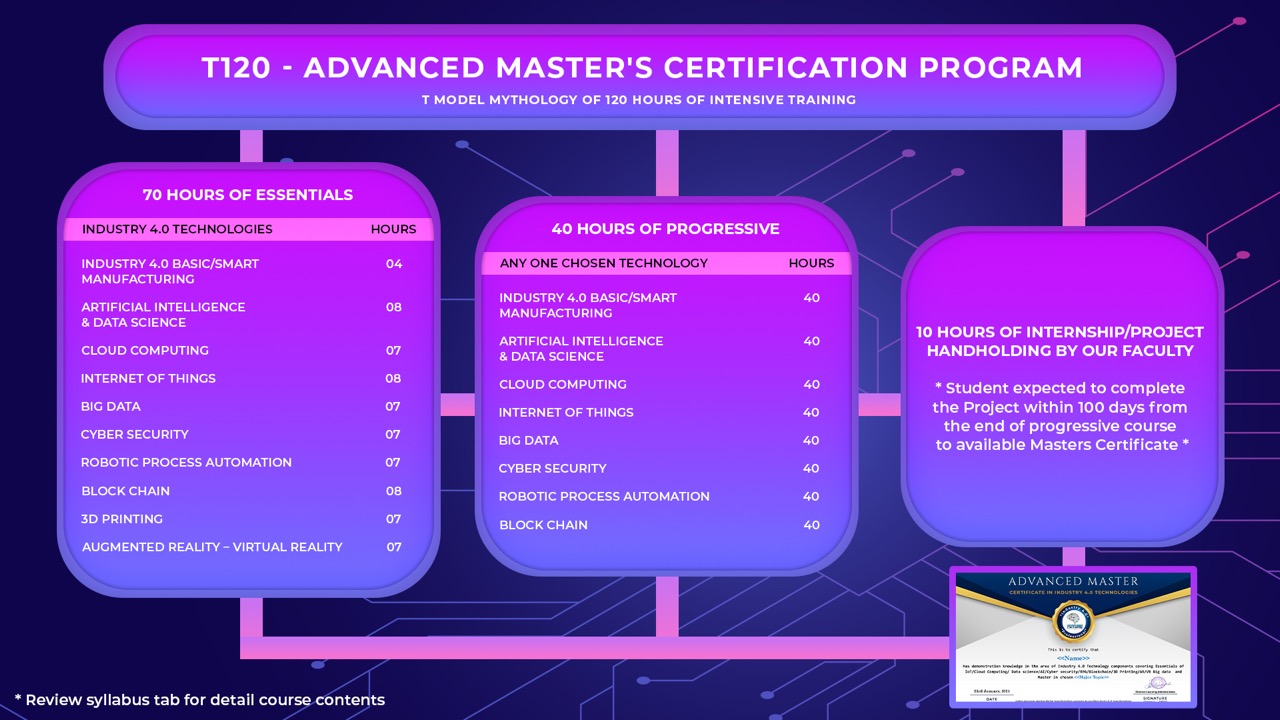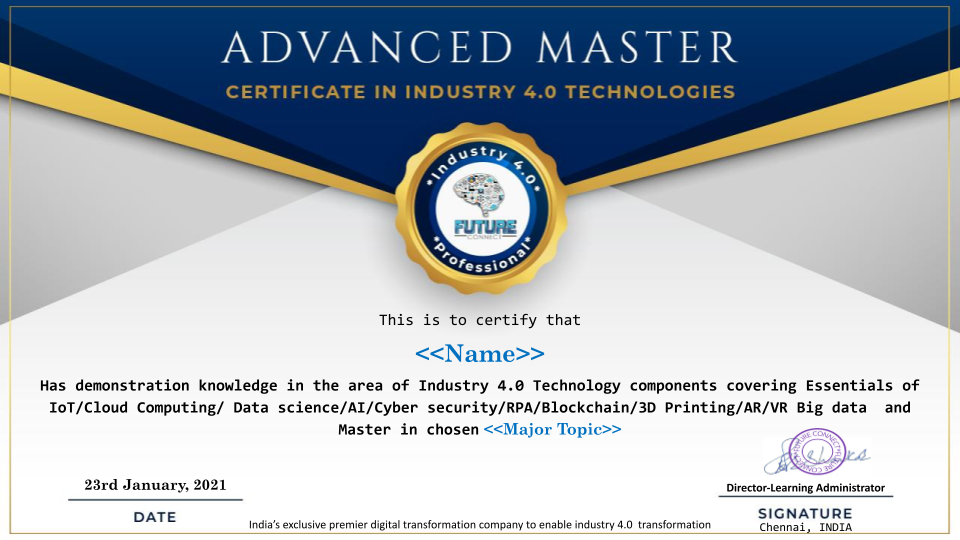
The Future Connect team is committed to offering India’s unique revolutionary and high-quality Industry 4.0 training program – “T120” Advanced Master's Certification Program for working professionals and aspiring students. The participants will secure excellent working knowledge from emerging technologies like IoT, Data Analytics, Artificial Intelligence (AI), Virtual Reality (AR), Augmented Reality (AR), Big Data, Robotic Process Automation (RPA), 3D Printing, Block Chain and Cyber Security. It is not going to stop there!!! Yes, the candidate will start learning in-depth training for any chosen emerging technology as per their career aspirations.
Moreover, this program is delivered by working professionals and top academicians from PMCGS Pvt Ltd, a leading Industry 4.0 system integrator from India.
Why take time to decide?
Go ahead and start your promising career from Industry 4.0 movement.
This module will train you in 3D modeling, which is a gateway to create your own incredible designs.
In this module, you will learn how to operate a basic 3D printer.


CLOUD COMPUTING FUNDAMENTALS AND MODELS (6 Hours)
CLOUD: ENABLING TECHNOLOGY AND APPLICATIONS (8 Hours)
CLOUD COMPUTING MECHANISMS AND STORAGE (10 Hours)
COST METRICS AND CLOUD COMPUTING ARCHITECTURAL MODEL (8 Hours)
CLOUD SECURITY AND ADVANCED CLOUD CONCEPTS (8 Hours)

INTRODUCTION AND CONCEPTS OF IoT (8 Hours)
IoT AND M2M COMMUNICATION (9 Hours)
IoT PLATFORMS (8 Hours)
IoT TECHNICAL STANDARDS AND PROTOCOLS (10 Hours)
DEVELOPING INTERNET OF THINGS (5 Hours)

Understanding Big Data and Hadoop (4 Hours)
Hadoop Architecture and HDFS (4 Hours)
Hadoop MapReduce Framework (4 Hours)
Advanced Hadoop MapReduce (4 Hours)
Apache Pig (4 Hours)
Apache Hive (4 Hours)
Advanced Apache Hive and HBase (4 Hours)
Advanced Apache HBase (4 Hours)
Apache Spark (4 Hours)
Oozie and Hadoop Project (4 Hours)




UNIT 1: Introduction
UNIT 2 : Available 3D Printing Technologies
UNIT 3 : 3D Printing Equipment
UNIT 4 : Select a STL Model From Online Repositries
UNIT 5 : 3D CAD Modelling Software Applications

Introduction to Virtual Reality
Multiple Models of Input and Output Interface in Virtual Reality
Interactive Techniques in Virtual Reality
Virtual Reality Environment
Augmented and Mixed Reality
Application of VR in Digital Entertainment









